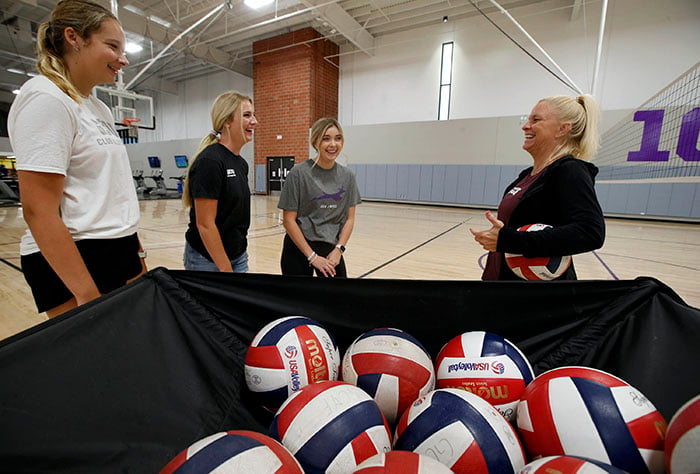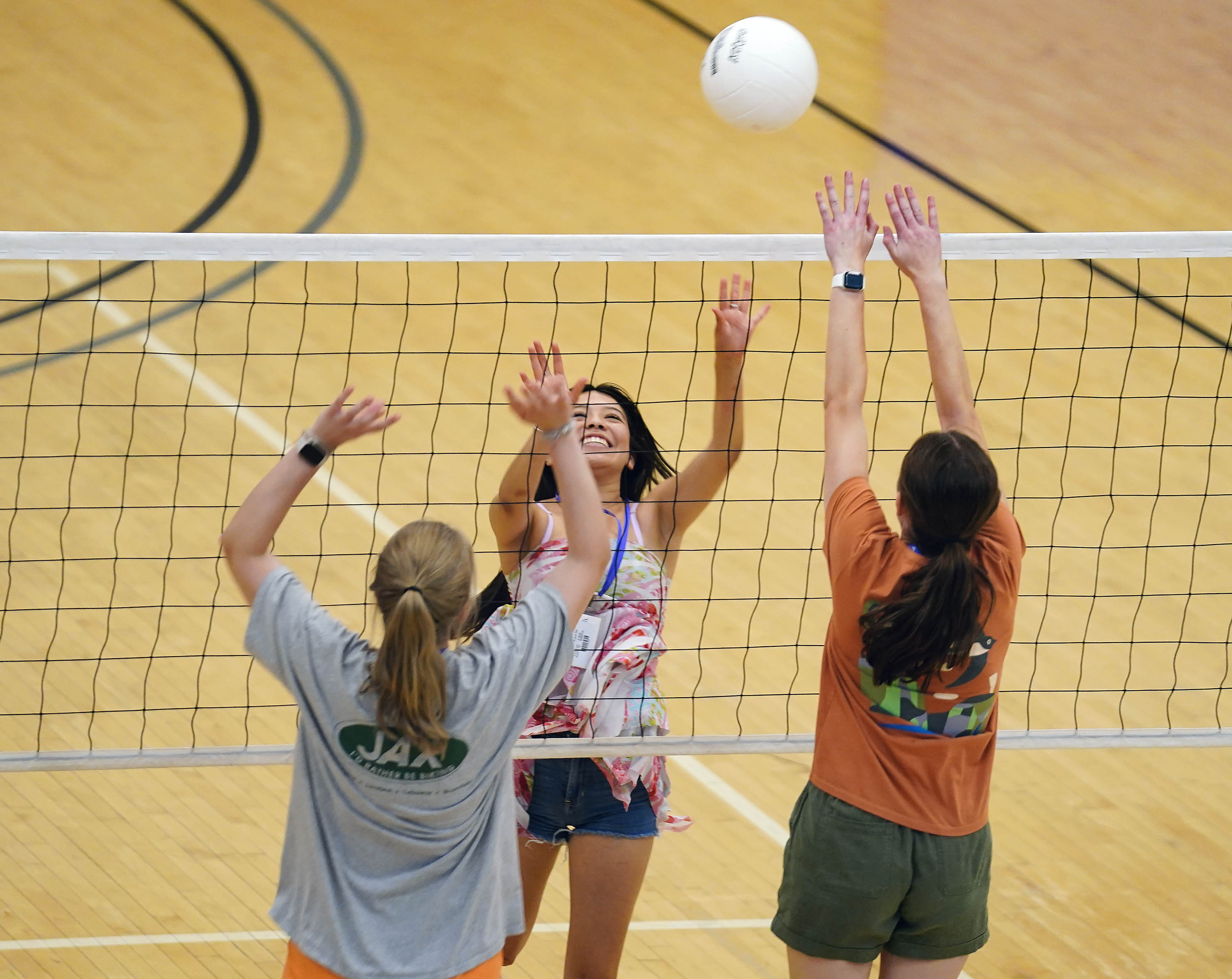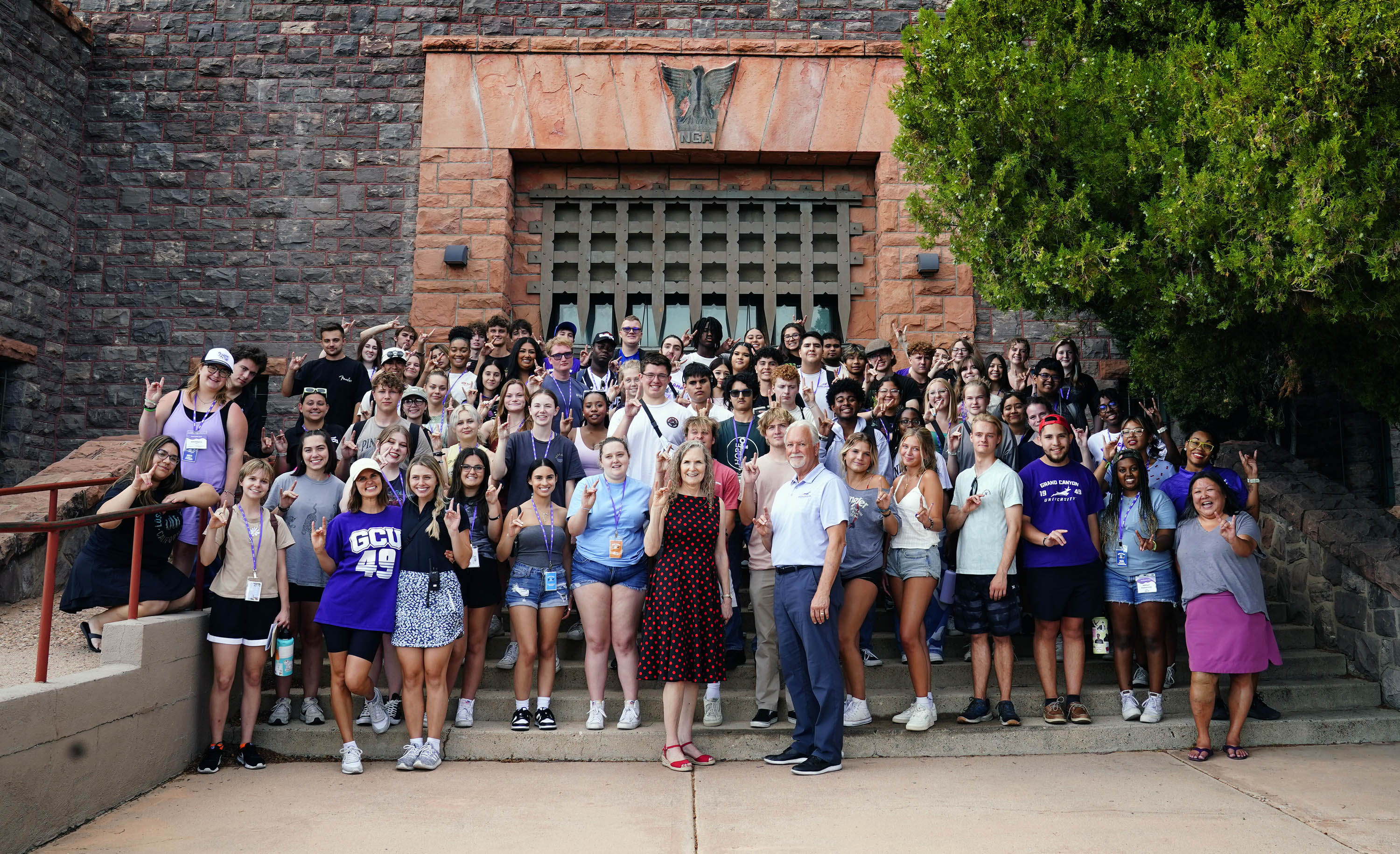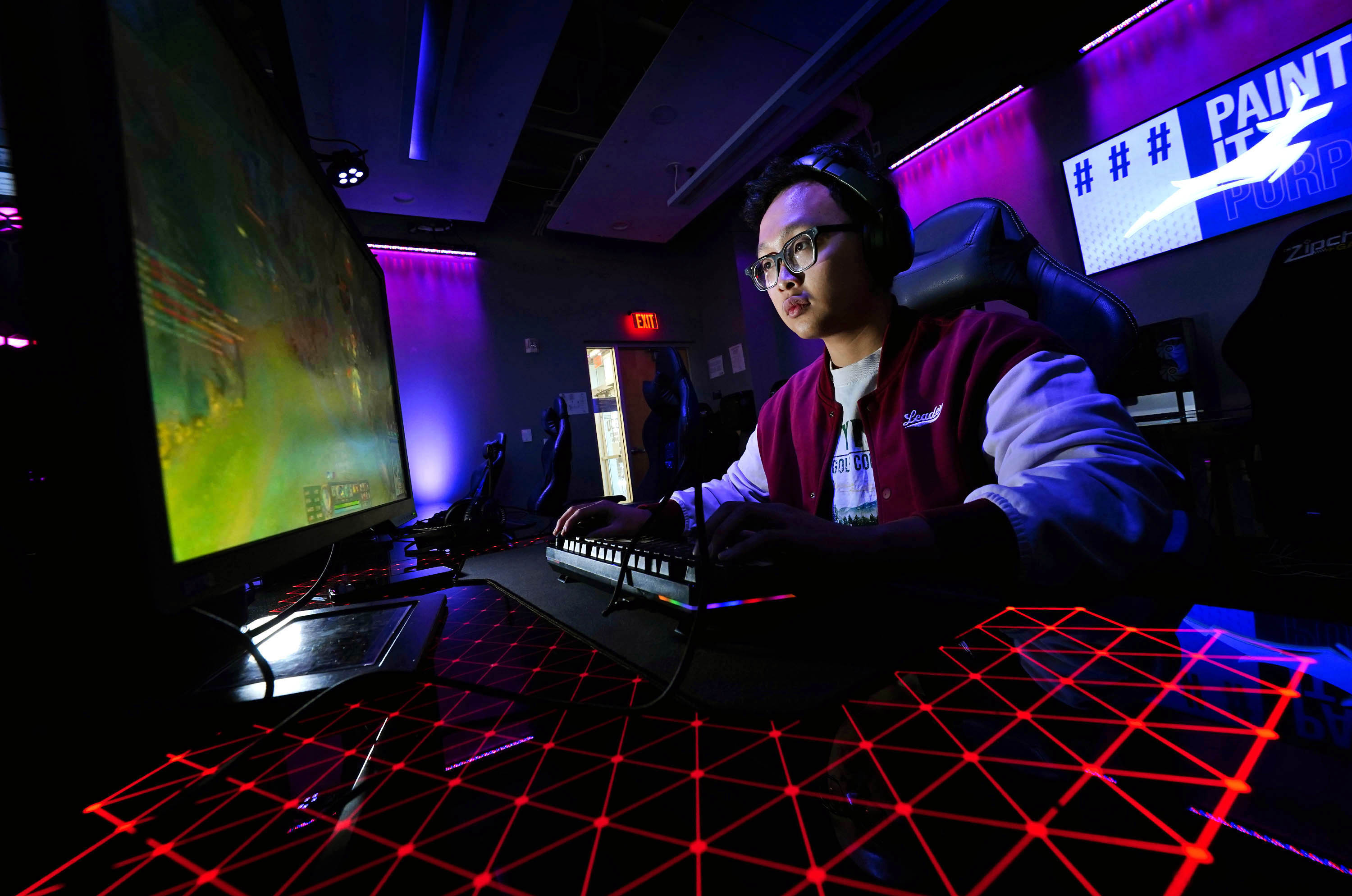
Story by Lana Sweeten-Shults
Photos by Ralph Freso
GCU News Bureau
Like a scene from “The Matrix,” Erik Yost and Anna White are in the wet lab in Grand Canyon University’s Natural Sciences Building, watching line upon line of data stream onto a laptop screen.
Since the beginning of May, the data dumps have been pouring in from the International Space Station’s National Science Lab. It’s where the STELLAR team’s first research project is under way.
Yost, STELLAR’s founding president and a biology/business junior, and White, its bio data engineer, will be spending a big chunk of their time this summer in the lab. They want to see if the research team’s microbial fuel cell – a battery that harnesses the power of bacteria to convert waste into energy – will work the way they expect.
Those results will help them move on to the heart of what STELLAR is all about — helping the underdeveloped communities they intend to visit on mission trips next academic year by bringing them a viable energy source. Those results, in so many ways, will allow the real work to begin.
The team this summer is running simultaneous experiments on two identical microbial fuel cells – one in space and the other on Earth in Yost’s office in the Engineering Building.

“That’s what we’re here doing is figuring out the numbers. We’re comparing it to the ground unit and the ground units in past years to figure out what the variable changes are,” said Yost.
STELLAR is expecting the battery to perform better in space, where there are no sheer stresses, such as gravity, wind, humidity or temperature variations that might affect the performance of the battery. They’ll then compare that to how the fuel cell performs on Earth, where the ground unit is subject to all those stresses. The idea is that by analyzing those variations, the team can improve how the battery works.
Once the team completes its data analysis, Yost will begin writing the team’s first research paper, relying heavily on STELLAR’s advisor, biomedical professor Dr. Jeff LaBelle, for help.
“It is no fun to write it,” Yost said. “It’s very long, but it’s exciting to know that I’m going to be able to start applying this type of technology. That’s the goal for this summer is figuring out this technology to bring it to Africa or Mexico or anywhere.”
For Yost, it is what all the research, the space launch, and the mad-paced fundraising to make the trip to space possible have been leading up to.
Because of COVID-19 restrictions, the team couldn’t go on a mission trip this summer, as originally planned. But Yost, who is helping organize a mission conference on campus next year as head leader of Global Outreach, has high hopes for a STELLAR mission trip in the fall or spring.
The team wants to bring a version of the fuel cell to an underdeveloped community to see if it can do what it is meant to do, which is bring energy to those communities. The hope is that a commonly found bacteria called shewanella might be used to power a lamp in a hut – or better yet, a few lamps in a few huts.
The team also is hyper-focused on making sure the fuel cell is financially viable for some of those remote, underdeveloped communities.
“All right, if I make this the size of a normal wastebasket, what will it do? And then figure, OK, now how can I make this super cheap? Can I make it where the wires aren’t $1 each, because that’s expensive out there (in mission countries). How can I really break down the cost?” Yost asked, the gears in his brain turning.

White, who herself has volunteered on mission trips to the Dominican Republic, Nepal and Guatemala, was more than ready to work with STELLAR this summer, something she did as an unofficial member of the team in 2021-22. The recent GCU biology graduate spent part of her time at GCU working as a student volunteer on the Helmsley Project in the LaBelle Labs, where a $2.3 million grant from the Helmsley Trust is being used to develop a sensor to continuously measure insulin and glucose levels.
“I love the idea of taking science and applying it to missions. Those are two of my biggest passions,” White said.
Besides data analysis, Yost, currently the only member of STELLAR along with White and co-founder Nathan Olsen, is reorganizing the group after last year’s team of more than a dozen members cycled through.
“How can I structure the team going forward? How can I continue to include all areas of campus, making sure everyone feels like they’re involved and has their hands dirty and really not overworking one person? How can I keep a balanced workflow while ensuring that this is real work experience?” Yost asked. “This last year, within one year, we were able to become a club, an RDP (Research and Design Program group) and send a project to space, which is just wild. So now it’s, how can we restructure it and make sure we’re set for next year?”
It hasn’t been decided yet what the team’s next project might be, since students will be reapplying to be a part of the team in the fall and will make that decision then. But Yost said the group is leaning heavily toward further testing the microbial fuel cell.
“Especially if we go to South Africa and bring this technology along. Say it doesn’t work, or it doesn’t work as well as we want it to. We want to be able to fix it.”
The team has tossed around other ideas, from building a bioreactor to seeing if bringing the battery to the University of Arizona’s Biosphere might be a possibility: “What if we were able to bring the fuel cell there to simulate sub-Saharan Africa and figure out how the fuel cell would work down there so that we’re not flying out to Africa, ‘Oh it doesn’t work,’ then flying back and fixing it. We would just drive down to Tucson,” Yost said.
But those are all hypotheticals.
What isn’t hypothetical is that STELLAR – a completely student-run program -- has proof of concept of its microbial fuel cell, which has been in space since its April 27 launch on the SpaceX Crew4 Mission.
The battery is working. “The Matrix”-like data that Yost and White are looking at all day is proof.
What also isn’t hypothetical: GCU, the university transforming its corner of the desert, is also now in space.
“GCU is there,” Yost said, a big smile on his face. “The fuel cell is there. It’s crazy, you know?”
GCU senior writer Lana Sweeten-Shults can be reached at lana.sweeten-shults@gcu.edu or 602-639-7901.
****
Related content:
GCU Today: Stellar makes final push as space launch nears
GCU Today: High school students research possibilities










